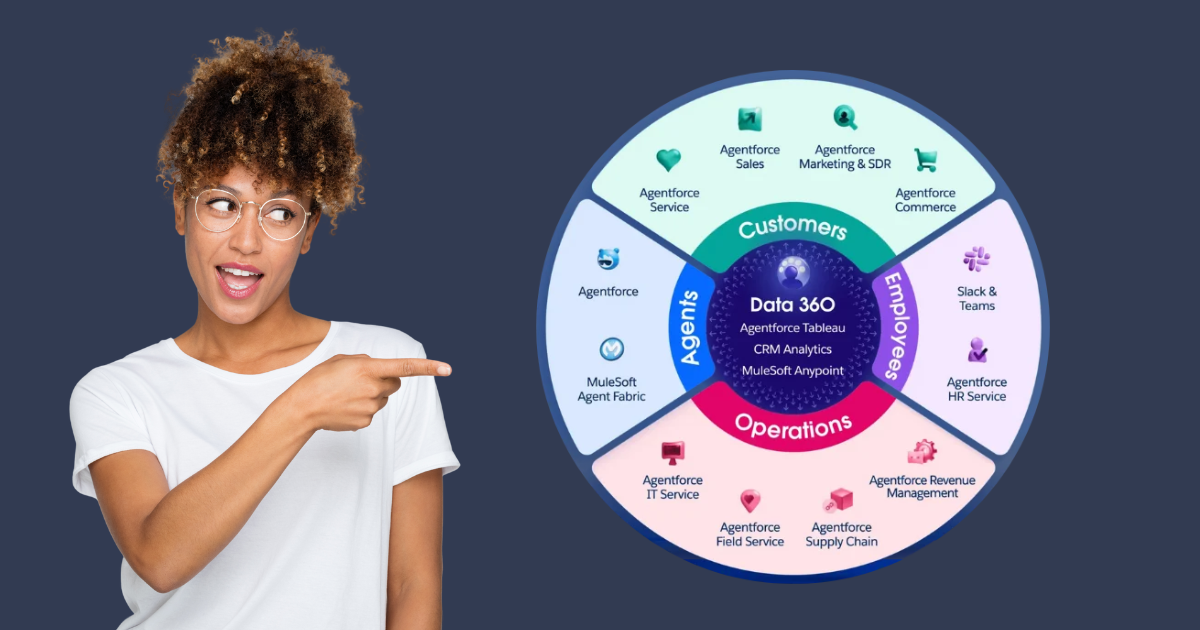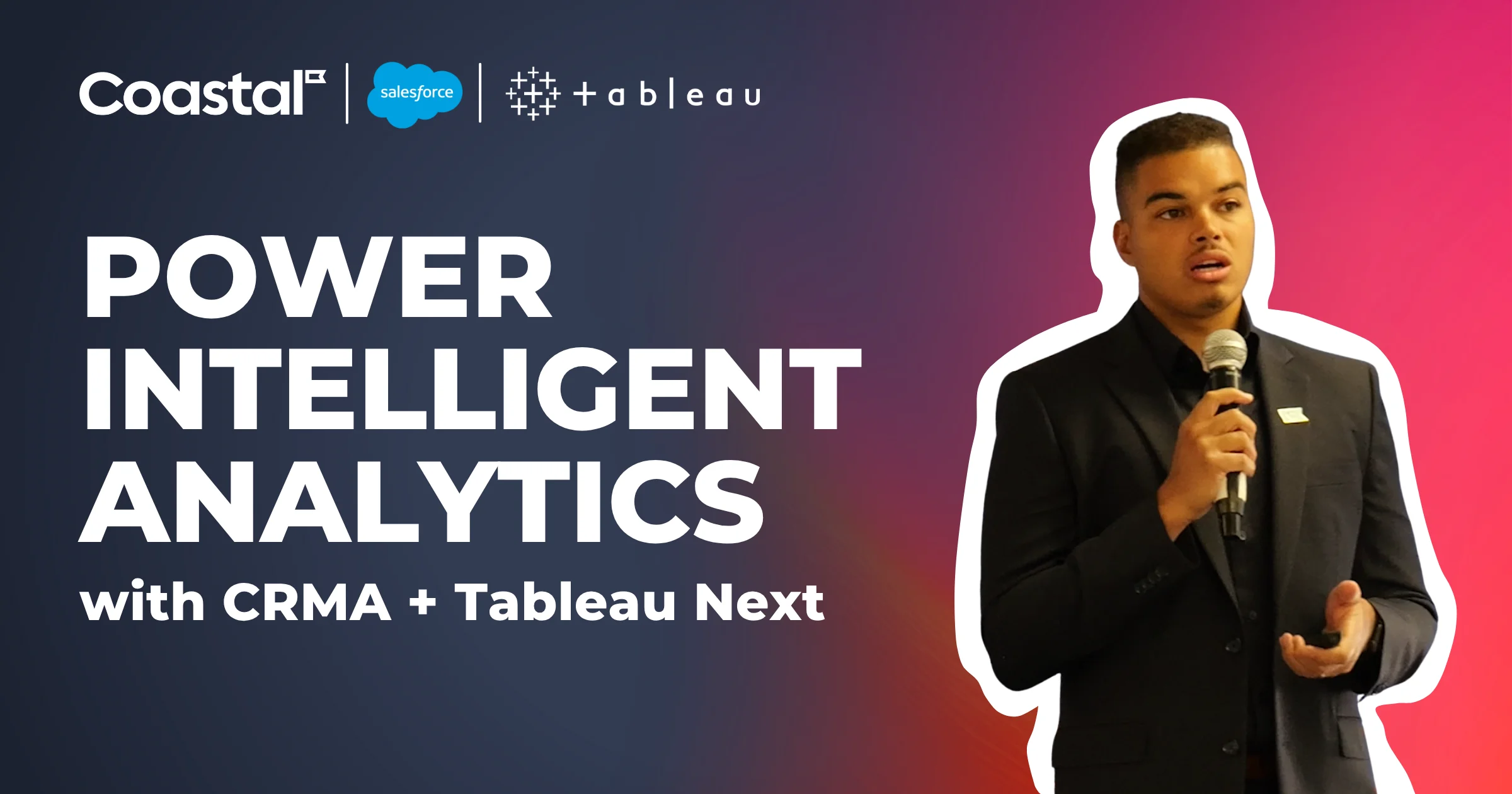If you lead a Salesforce program or are considering an implementation, you’ve probably come across two common terms: Salesforce Partner and Salesforce Managed Service Provider (MSP).
They may sound similar, but they’re not interchangeable. Each serves a different function in the Salesforce lifecycle. Understanding that distinction helps you decide what support you need today—and how to keep Salesforce delivering value over time.
What a Salesforce Implementation Partner Does
A Salesforce partner is your architect and builder. Partners are engaged for major initiatives where you need certified expertise to stand up or transform Salesforce. They design, implement, and customize Salesforce to align with your business model and strategy.
They’re the right fit if you’re launching Salesforce for the first time, expanding into new clouds, or resetting an org that’s out of alignment.
What That Looks Like in Practice
Here are a few examples of how Salesforce partners unlock value when the platform is implemented strategically:
- ADT improved service delivery and billing efficiency by unifying Service Cloud, Marketing Cloud, and Revenue Cloud.
- Mural, a high-growth SaaS company, scaled sales efficiency and revenue growth with Data Cloud, Sales Cloud, and Tableau.
These examples highlight a simple truth: the right Partner ensures Salesforce is designed to solve core business challenges from day one.
Salesforce Partner Tiers Explained
Not all partners are created equal. Salesforce evaluates consulting firms across four tiers—Base, Ridge, Crest, and Summit—based on their certifications, customer outcomes, innovation, and ecosystem impact.
Coastal is a Summit-level partner, Salesforce’s highest designation. For executives, that matters. It means you’re working with one of the most capable firms in the ecosystem:
- Hundreds of certifications across Salesforce Clouds and industries
- A 5/5 customer satisfaction rating on AppExchange across hundreds of reviews
- Multiple seats on Salesforce Partner Advisory Boards, giving clients early visibility into product innovations
- Recognition from Salesforce and ISG for both technical excellence and measurable business impact
Choosing a Summit Partner reduces risk and gives you confidence that your Salesforce investment is in the hands of proven experts.
What a Salesforce Managed Service Provider Does
Once Salesforce is live, the challenge shifts from building to sustaining and evolving. That’s where a Salesforce managed service provider comes in. An MSP functions like a fractional Salesforce team, providing ongoing support to keep your org running smoothly and adapting as business needs change.
MSPs handle day-to-day tasks, including monitoring the health of your Salesforce org, resolving issues, updating automations, and scaling support during peak demand. They’re best suited for organizations that already have Salesforce in place but lack the in-house capacity to keep pace with user requests, data management, and release cycles.
What Managed Services Look Like in Practice
Here are a few examples of how organizations use managed services to keep Salesforce delivering value over time:
- A national nonprofit scaled its Salesforce operations, gaining proactive support and strategic enhancements that allowed its small internal team to deliver impact at enterprise scale.
- A high-growth SaaS company scaled its Marketing Cloud operations, ensuring that campaigns remained optimized and evolved in line with business demands without overwhelming internal resources.
These stories show how ongoing support makes the difference between Salesforce that slowly drifts—and Salesforce that continues to accelerate business outcomes.
Partner vs Managed Service Provider: It’s About Timing
Partner vs managed service partner isn’t a question of “better or worse.” It’s about timing. A partner handles major initiatives—building, expanding, or transforming Salesforce. An MSP provides the ongoing support that ensures Salesforce continues to deliver once it’s live.
Most leaders eventually need both. The real challenge isn’t choosing one over the other. It’s making sure the transition between them doesn’t cost you momentum.
Why the Handoff Often Breaks Down
Even when firms offer both partner and managed services, the connection between them is usually fragile. After an implementation, the partner team wraps up, and a new support team comes in cold. Institutional knowledge gets lost. Support often becomes reactive—focused on closing tickets instead of proactively advancing the platform. And without a framework tying ongoing work to business strategy, Salesforce can easily drift off course.
Where Coastal’s Waves Fits In
That’s why Coastal built Waves, our methodology for ensuring Salesforce continually evolves in sync with your business priorities. With Waves, there’s no handoff cliff. The same trusted team stays engaged through a cycle of quarterly alignment, proactive planning, and measurable outcomes.
Every quarter, Salesforce changes are tied back to executive priorities. Enhancements are planned ahead of demand. Adoption, efficiency, and ROI are tracked and visible at the leadership level.
The result: Salesforce keeps pace with your business, instead of lagging behind it.
Making the Right Choice
Choose a Salesforce partner if…
You’re implementing Salesforce, adding new clouds, or driving a major transformation.
Choose a managed service provider if…
Salesforce is live, and you need reliable, ongoing support without adding full-time staff.
Choose both if…
You want continuity from the first implementation through long-term optimization. That’s what Waves delivers: Partner-level expertise and MSP-level continuity, unified by one methodology.
Final Thought
Think of it this way:
- A Salesforce partner builds the house.
- A managed service provider maintains it.
- Waves evolves it—keeping your Salesforce org modern, scalable, and ROI-positive over time.
If you’re evaluating your options, the fastest path to clarity is our Salesforce Peak Performance Diagnostic. It’s designed for organizations already live on Salesforce that want to identify where performance is stalling, where to optimize to increase ROI, and whether their org is ready for the next stage, from data modernization to AI.



